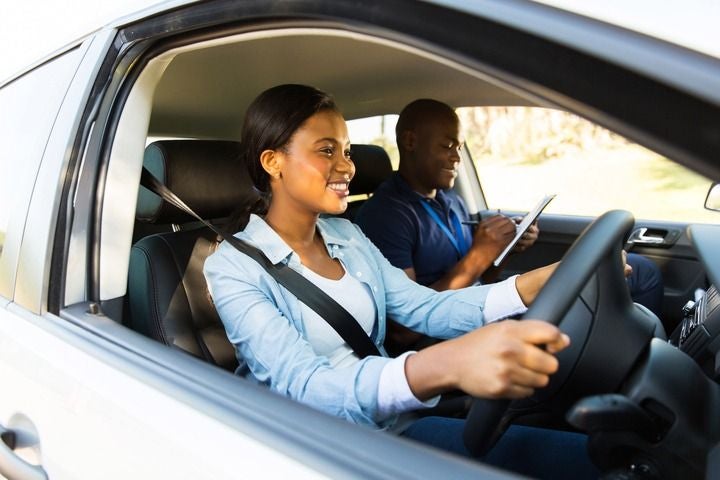Picture this, you've been eyeing a particular car model for months now, and finally, you've mustered up the courage to take it out for a spin. You walk into a dealership, your heart racing with excitement, and there it is, sitting in the showroom, marinating in all its glory. You open the door, take a deep breath, and sit in the driver's seat. You start the engine, and suddenly, you're teleported to a world of comfort and luxury. The steering wheel feels just right in your hands, the seats are comfortable, and the entertainment system makes you groove.
The next step is where the real fun begins. You take the car for a spin, and as you drive, you start to notice its subtle nuances, quirks and characteristics. The handling is smooth, the acceleration is enigmatic, and the car feels stable.
The ultimate checklist for a test drive includes comfort and interior features, handling and performance, visibility and safety features, technology and entertainment systems, and trunk space and storage. A test drive is an opportunity to get to know the car, and with the right preparation, you'll be able to make an informed decision and find your perfect match. So, gear up; it might just be the perfect time for a test drive!
Shortlisting Cars for a Test Drive

Choosing the right car to test drive can be an uphill task, especially with the number of options available in the market. But with a little research, you'll be able to shortlist the perfect cars for a test drive in no time. Here's a step-by-step guide on how you can do that:
- Fix a budget
Before looking for your ideal car model, deciding on a realistic budget is important. This will help you narrow down your options and ensure that you're not wasting your precious time and energy on cars that are out of your price range.
- Prioritise your priorities
Decide on what your priorities are — comfort, performance, fuel efficiency, or a combination of these factors — and choose a car that caters to your needs.
- Research. Research. Research.
Relevant, correct, and updated information is your friend when it comes to finding your dream car. Use the internet to compare different car models, read reviews, and check for specifications to better understand the car's features and performance.
- Recommendations are good
If any of your friends or family have recently purchased a car, ask for their recommendations. They may be able to provide you with valuable insights and first-hand experiences that you wouldn't have otherwise. Also, their reviews are going to be more honest and reliable.
- Visit the dealership
Once you have a list of potential cars, visit the dealership to get a closer look at some of them. You can explore the car, check out the interior and exterior, and ask the salesperson any questions you may have. This will give you a better idea about the car and help you make a more informed decision.
- Test drive
Once you have shortlisted a few cars, it's time to take them for a test drive. It is a golden opportunity for you to experience the car's handling, performance, and comfort, so make sure you take your time and enjoy the ride!
Also read : How to Buy Good Used Cars
Test Drive the Version You Are Considering for Purchase
When it comes to buying a car, a test drive is a pivotal step in the decision-making process. It gives you ample time and opportunities to experience the car's performance, comfort, and handling before investing. Here's why it's important to test drive the cars you have shortlisted:
- Model Variations
Cars come in different shapes, sizes, and packages, each offering a unique set of features and capabilities. If you're considering a higher-end car, make sure you test-drive that specific version to experience the full range of features and amenities you're paying for.
- Different Engine Options
Different engines can greatly affect a car's performance, so it's important to test drive a car with the specific engine that you're interested in. A test drive of a car with a smaller, less powerful engine might not accurately reflect the performance of the same car with a larger engine.
- The Dynamics of Driving
The weight, balance, and equilibrium of a car depend on a lot of factors, like the engine and transmission, so it's important to test drive the version that you want. This will give you a better understanding of the car's dynamics and help you make an informed decision.
- Features and Technology
High-end cars often come with the latest technology and features, so it's important to test drive the specific version of the car that you're interested in. This will give you a more realistic experience with the car's technology and features.
Also Read : How to Check Used Car Engine Condition
Here are some top tips to help you make the most of your test drive:

Before The Test Drive
- Check the exterior and interior of the car for any signs of accidental damage or wear.
- Open and close all the doors, the trunk, and the hood to make sure everything operates smoothly.
- Adjust the seat, steering wheel, and mirrors to your preferred position.
- Familiarise yourself with the controls.
During the Test Drive
- Pay attention to the car's handling, braking, and acceleration.
- Take the car across a different spectrum of roads to get a feel for its performance in different driving conditions.
- Test the audio and navigation system.
- Make a note of any comfort, discomfort, and performance issues.
After the Test Drive
- Take some time to reflect on your experience.
- Discuss your observations with your friends, family, and the salesperson and address any questions you may have.
- Don't be afraid to ask to test drive the car again or to test drive a different version of the car.
Convenient Time and Place
- Schedule the test drive at a time that's convenient for you and make sure you get enough time for a thorough evaluation.
- Choose a quiet, safe place for the test drive, free from distractions. Use this opportunity to interact with the car and get to know it better.
Things to Take Along
- A driver's licence
- A list of questions you want to ask the salesperson
- A friend or family member who can accompany you and offer their valuable insights
- A smartphone to take photos of the car
- A notebook to make notes and record your observations (if you're missing the charm of putting pen to paper)
By following these tips, you can make the most of your test drive and better understand the car's capabilities and features. Take your time, ask your questions, and make sure you're comfortable and confident before making a purchase.
Top tips for a new car and a used car test drive
New Car Test Drive
- Do your research and narrow down your options to a few top contenders.
- Familiarise yourself with the technology and features of the car model you are interested in.
- Take the car on the highway and city roads to get an idea of its performance in different driving conditions.
- Ask the salesperson to demonstrate the car's features, such as the audio system, climate control, and navigation system.
Used Car Test Drive
- Check the car's history and maintenance records before scheduling a test drive.
- Take the car on a longer test drive to get a better sense of its performance and handling.
- Pay close attention to the car's brakes, suspension, and transmission.
- Ask the seller about the car's maintenance history and any accidents or repairs it may have been through.
- Have your mechanic inspect the car before making a purchase.
Think of a test drive as an opportunity to bond with your future car, where you get to know its quirks, potential, strengths, and limitations. There is nothing better than love at first drive. The perfect car is out there, waiting for you – it's just a matter of taking the right test drive.
By following our ultimate checklist for a test drive, you'll have the opportunity to get behind the wheel and experience the car's performance, comfort, and handling before making an investment and purchasing your dream car.
FAQs:
Yes, test drives are generally free in India, but it is advisable to confirm the details with the dealership.
The distance you can drive during a test drive varies depending on the dealership. Typically, it is around 10-15 km.
When test-driving a car, ask questions about the car's features, safety, performance, and reliability. You may also ask about financing options, warranty, and after-sales service.
The process for a test drive typically involves scheduling an appointment with the dealership, filling out some paperwork, and taking the car for a spin.
Yes, you can test drive a car alone, but some dealerships may require a salesperson to accompany you.
A test drive typically takes around 30 minutes to an hour. It depends on the dealership's schedule and the type of car you want to test drive.






.jpg&w=828&q=75)






.jpg&w=828&q=75)
.jpg&w=828&q=75)
.jpg&w=828&q=75)
.jpg&w=828&q=75)

.jpg&w=384&q=75)

.jpg&w=384&q=75)
.jpg&w=384&q=75)

.jpg&w=384&q=75)
.jpg&w=384&q=75)

.webp&w=384&q=75)








